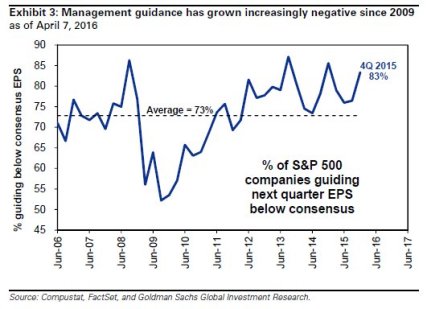Summary
Our review of APRA’s June 2019 quarterly report on the four major banks — Commonwealth, Westpac, ANZ and NAB — concludes that they are collectively priced at a 16.5% premium over fair value.
Technically, the ASX 300 Banks Index ($XBAK) is experiencing secondary selling pressure and a correction is likely.
A correction would reduce the premium over fair value and may present buy opportunities.
Valuation
We project:
- long-term asset growth at 3.0% p.a. (down from 4.0%);
- net interest margins at 1.65% of average total assets (down from 1.70%);
- non-interest operating income of 0.5%;
- operating expenses at 1.05% (previously 1.10%);
- provisions for bad/doubtful debts averaging 0.2%;
- additional equity capital required of $12 billion; and
- a 30% tax rate.
That delivers a forward PE of 16.9 based on a market cap of $399 billion.
We estimate that the major banks are priced at a 16.5% premium over fair value, based on a 12-year payback period*.
*Note to readers: we have simplified our model by removing the margin of safety and use a lower payback period instead.
Technical Analysis
The ASX 300 Banks index retreated below its rising trendline, warning of a correction. Follow-through below support at 7600 would strengthen the signal, with a target of primary support at 6750.

Book Growth
Total assets are the primary engine of bank revenue. Heady growth of the last two decades ended in 2015, when the ratio of total assets to nominal GDP (right-hand scale) started to decline. Nominal GDP also slowed (5.4% p.a. in June 2019) and is likely to restrict future book growth.

Household debt near saturation level, at close to 200% of disposable income, is another headwind to future book growth.

Total asset growth of the major four banks slowed to 1.4% for the twelve months ended June 2019 and we have reduced our long-term projection to 3.0% per year.
Margins
RBA rate cuts are squeezing net interest margins, currently 1.73%, and we expect a long-term average of 1.65% of total assets.

Expenses declined to 1.09% of total assets but non-interest income, at 0.56%, is falling even faster.
Non-Interest Income
Fees and commissions — the major component of non-interest income — have suffered the largest falls. Transaction-based fees are the worst performer, while declining credit growth has reduced lending-based fees. The sharp drop in other fees, to 0.19%, is likely to be permanent as banks shed their wealth management operations.

We project non-interest income to average 0.50% of total assets in the long-term.
Expenses
Operating expenses declined to 1.09% of total assets, as the majors attempt to cut costs in line with income, but personnel costs have proven sticky and are falling at a slower rate.

Non-Performing & Past Due Assets
Charges for bad and doubtful debts remain low at 0.09% of total assets but we expect a long-term average of 0.20%.

Impaired loans are falling as a percentage of total loans and advances but past due loans have climbed to 0.6%, reflecting mortgage stress.

Provisions for impaired loans, however, are reasonable at 95.8% of impaired facilities including security held.

Capital
Common equity Tier 1 capital (CET1) remains low, with a CET1 capital ratio of 10.8% in June 2019, based on risk-weighted assets. CET1 as a percentage of total assets is a low 4.96%.
The Reserve Bank of New Zealand has called for “more skin in the game“, asking the big four Australian banks to increase their capital holdings in New Zealand subsidiaries by $12 billion:
The RBNZ proposal calls for systemically important banks to hold a minimum of 16% Tier 1 capital against risk-weighted assets, of which 6% would be a regulatory minimum and 10% would act as a counter-cyclical buffer to absorb losses without triggering “resolution or failure options”.
A similar move by APRA is unlikely but RBNZ presents a problem for the big four banks as they will have to raise additional equity to capitalize their NZ subsidiaries. One alternative is to raise equity through a separate listing of their NZ subsidiaries but this is still likely to dilute returns on equity.
Return on Equity
Declining return on assets and increased capital requirements are both exerting downward pressure on return on equity (ROE), from a peak of 20.5% in 2007 to 9.7% in March 2019.

Management & Culture
Australian regulator APRA is suffering from regulatory capture. A 146-page capability review, stemming from David Murray’s Financial System Inquiry found APRA “slow, opaque, inefficient, and in urgent need of a culture and leadership overhaul.”
Disclosure
Staff of The Patient Investor may directly or indirectly own shares in the above companies.

Colin Twiggs is a former investment banker with almost 40 years of experience in financial markets. He co-founded Incredible Charts and writes the popular Trading Diary and Patient Investor newsletters.
Using a top-down approach, Colin identifies key macro trends in the global economy before evaluating selected opportunities using a combination of fundamental and technical analysis.
Focusing on interest rates and financial market liquidity as primary drivers of the economic cycle, he warned of the 2008/2009 and 2020 bear markets well ahead of actual events.
He founded PVT Capital (AFSL No. 546090) in May 2023, which offers investment strategy and advice to wholesale clients.




































